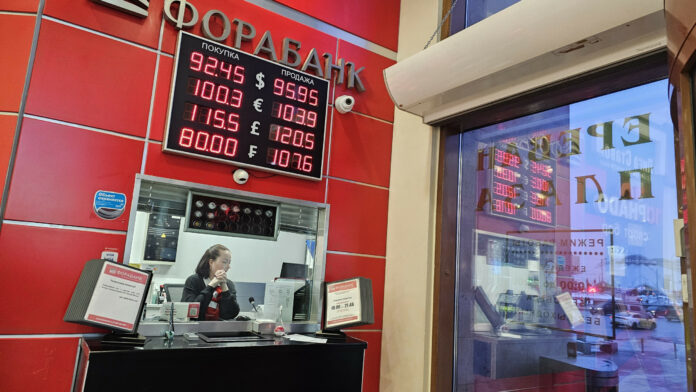Russia’s sanctions-hit economy rebounded more strongly than expected in 2023 and will grow this year, driven by spending on Vladimir Putin’s war effort of Ukraine and exports to China, according to analysis by financial services firm Allianz.
However, the assessment released Monday said foreign investment has dried up in Russia and that its military spending was hiding the underperformance of the rest of the economy.
Sanctions imposed on Russia after Putin’s full-scale invasion two years ago aimed to isolate the country from the global financial system and deprive it funds to wage its war. While the measures, which included freezing Russian Central Bank assets and cutting Western reliance on its energy products, caused turbulence, economic forecasts point to Russia’s economy stabilizing—at least in the short term.
Putin has touted more trade with China and announced massive spending increases on his military, which will comprise nearly a third of all government spending this year.
Increased government outlay has helped real GDP (gross domestic product) in Russia grow by 3.6 percent in 2023, up from the minus 1.2 percent contraction in 2022, according to figures released last week by Russian state statistics agency Rosstat.
Getty Images
Allianz has predicted that GDP growth for this year would be 2.5 percent, which is roughly aligned with the 2.6 percent forecast announced by the International Monetary Fund (IMF) this year.
While war industries and construction have surged since the start of Putin’s full-scale invasion—35 percent and 15 percent higher respectively than in 2021—Russian gas exports continue to suffer due to sanctions imposed by the EU. The union of states was Russia’s major market for the fuel, the analysis by Allianz said.
“Russia’s economic outperformance reflects the redeployment of resources towards war, disguising the underperformance of the rest of the economy,” Ana Boata, head of economic research at Allianz Trade, said in a statement to Newsweek.
High levels of public spending have fueled inflation, which is at 7.4 percent, and prompted the Central Bank to hike interest rates to 16 percent. Allianz predicted they would be lowered to 11 percent by the end of the year.
Rosstat did not release export and import data, but Allianz estimated that real exports performed significantly worse than real imports. Meanwhile, despite sanctions, EU goods are still entering Russia via third-party countries, Allianz said, making their way to the country via Turkey and Central Asia.
“Goods entering the Eurasian Customs Union face minimal checks, facilitating this flow,” Boata said. “These trends coincide with increased trade between these regions and Russia, indicating a potential circumvention of sanctions.”
By July 2023, 1,028 Western companies had fled Russia—32 percent from the U.S.—and there appears to be no sign of their return. Allianz said that even countries that did not impose sanctions “are not willing or able to invest in Russia on a large scale,” a trend that will continue. “Foreign investment has dried up significantly as investors shy away from Russia,” added Boata.
Analysis by independent Russian news outlet The Bell noted that Russia’s militarized economy “is storing up problems for the future.” The outlet said Russian growth is “not a healthy sort of flourishing” as it masks a decline in productivity, labor shortages and volatility in the currency, the ruble. “The current stability is not likely to endure,” the Bell said, “in one to two years, the structure will begin to wobble due to accumulated imbalances, and possible social problems.”
A major problem for Russia’s economy is that, even if Putin is pouring money into industries involved in the war, there are fewer people to hire, limiting Russia’s ability to increase production.
“The situation in the labor market has got more complicated,” Olga Bychkova, economist at financial services company Moody’s Analytics, told Newsweek. “Measures implemented by businesses to address the problem of labor shortages—wage indexations and staff training—did not help alleviate the staff deficit, especially in manufacturing,” she said, “but these measures have increased inflation pressures.”
Uncommon Knowledge
Newsweek is committed to challenging conventional wisdom and finding connections in the search for common ground.
Newsweek is committed to challenging conventional wisdom and finding connections in the search for common ground.


